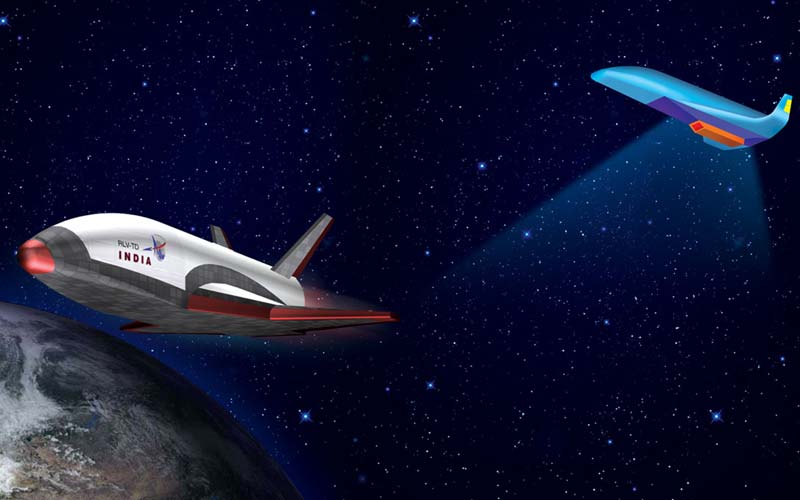
India’s RLV-TD launch: All you need to know about the reusable space shuttle
India today successfully launched a Reusable Launch Vehicle (RLV) space shuttle and here’s why it matters.

India on Monday successfully launched a Reusable Launch Vehicle (RLV) space shuttle, the first ever for the country. The ‘dummy’ RLV was launched from Sriharikota in Andhra Pradesh into the orbit around Earth, and then glided back onto a virtual runway in the Bay of Bengal, some 500 kilometres from the coast. The 6.5 metre long ‘aeroplane’-like structure weighing 1.75 tons was hoisted into the atmosphere on a special rocket booster. “Mission accomplished successfully,” an Indian Space Research Organisation (ISRO) spokesman told PTI soon after RLV-TD HEX-01 was flight tested with the take off at 7 am. This is the first time ISRO has launched a winged flight vehicle. –
So why does India’s RLV Space Shuttle experiment matter so much and what is it all about?
The first experiment conducted was the hypersonic flight experiment, and the entire mission was around 10 minutes from liftoff to splashdown. The vehicle, however, will not be recovered, as it was a ‘dummy’. This RLV-TD is described as “a very preliminary step” in the development of a reusable rocket.
The final version of the resuable rocket will take 10 to 15 years to build according to ISRO, but Monday’s announcement marks the first step in that journey.
The reason for looking at reusable space shuttles is simple: these will be cost-effective going forward as scientists try and decode the mysteries of space. According to the ISRO website, “cost of access” to space remains high and a big detriment, and “a reusable launch vehicle” is seen a solution, while giving reliable and on-demand space access.
The RLV-TV could also bring down cost of launching rockets for carrying satellites into the earth’s polar and geo-stationary orbits in the future.
RLV-TD is a series of technology demonstration missions that have been considered as a first step towards realising a Two Stage To Orbit (TSTO) fully re-usable vehicle, ISRO said.
The shuttle will be used to test various technologies, including hypersonic flight, autonomous landing, powered cruise flight and hypersonic flight using air-breathing propulsion, according to ISRO.
According to ISRO, the first in the series of experimental flights is the hypersonic flight experiment (HEX) followed by the landing experiment (LEX), return flight experiment (REX) and scramjet propulsion experiment (SPEX).
“In subsequent test flights, we will attempt to land the reusable vehicle at a specific location on land like an aircraft does on a runway so that we can again use it for launching more satellites, ” Vikram Sarabhai Space Centre (VSSC) director K. Sivan had told IANS ahead of the mission.
The cost of developing the RLV technology is estimated to be about Rs 100 crore ($15 million). The space agency’s telemetry, tracking and command network (Istrac) in Bangalore will collect the data from the vehicle.
India’s Space Shuttle programme is the not first in the world. NASA used to have its own space shuttle programme with shuttles like Enterprise, Discovery, Endeavor, Columbia, Atlantis and Challenger.
They were seen as a space transportation system for over three decades from 1981 to 2011, when NASA finally ended the programme. Columbia was destroyed in 2003 when it was returning from a space mission killing all seven astronauts on board, including Indian-origin NASA astronaut Kalpana Chawla.
